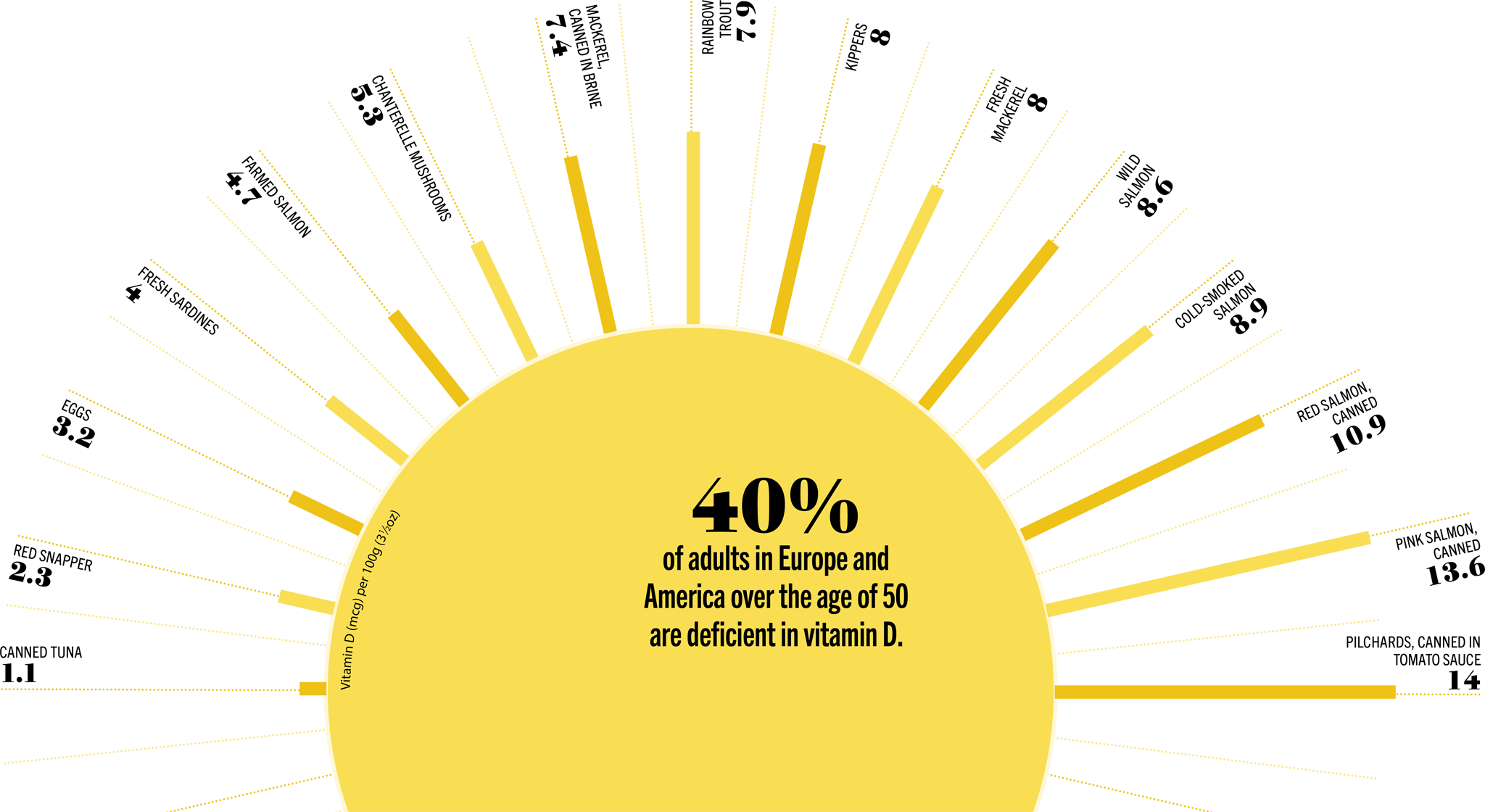

Despite being able to make vitamin D ourselves, a lack of vitamin D is one of the most common nutritional deficiencies in the world. Since it’s so vital to health and longevity, it’s time to address the situation.
The figures are staggering: more than four in 10 adults over the age of 50 in the US and Europe are deficient in vitamin D. The “sunshine vitamin” – it’s made in the body when the skin is exposed to sunlight – is best known for its role in keeping bones strong and healthy. Vitamin D helps the body absorb calcium from foods and deposit it in bones, thereby helping to prevent bone conditions, such as osteomalacia in adults and rickets in children.
But its benefits go way beyond the health of our bones. Vitamin D keeps our muscles functioning properly and is vital for a strong immune system. One 2017 study of about 11,000 people found supplements of vitamin D reduced the risk of acute respiratory tract infections (such as colds, flu, bronchitis, and pneumonia) by 12 per cent. The effects were particularly strong for those initially deficient in vitamin D.
Scientific studies also reveal that a deficiency of vitamin D may increase the risk of many conditions, including type 2 diabetes, heart disease, certain cancers (especially bowel cancer), multiple sclerosis, rheumatoid arthritis, and osteoarthritis. Other research shows a link between low intakes of vitamin D and an increased risk of mental decline, dementia, and Alzheimer’s disease.
More research is needed, but with so many potential links to better health, vitamin D is creating a buzz in the nutrition world.
Because most vitamin D is made when the skin is exposed to the sun’s UVB rays, people who cover up for cultural reasons or who are housebound are at particular risk of vitamin D deficiency, as their skin isn’t exposed to sunlight. Using sunscreen has a similar effect since it blocks UVB rays.
The sun’s rays need to be of a certain strength to create vitamin D, so where we live, the season, and the time of day can affect how much is made.
People with darker skins may also be at risk, even if they live in a sunny climate, since higher pigment levels affect the skin’s vitamin D making ability. Older people are more prone to a deficiency, because age-related skin changes mean less vitamin D is made. So, be safe in the sun, but be sure to get enough, and let food play its part.

Getting enough sun
When UVB rays are at the right strength, the skin only needs short periods of direct exposure to make vitamin D. It’s vital to follow sun safety advice and make sure skin doesn’t burn, as sunburn is linked to an increased risk of skin cancer.
We can top up our body’s store of vitamin D with foods, including oily fish, mushrooms, and eggs. The World Health Organization recommends a daily vitamin D intake of 5mcg for everyone under 50, 10mcg for 51–65-year-olds, and 15mcg for over 65s. Some health organizations suggest that everyone takes a vitamin D supplement in autumn and winter to guarantee levels for optimal health.
40%
of adults in the US and Europe over the age of 50
are deficient in vitamin D.
